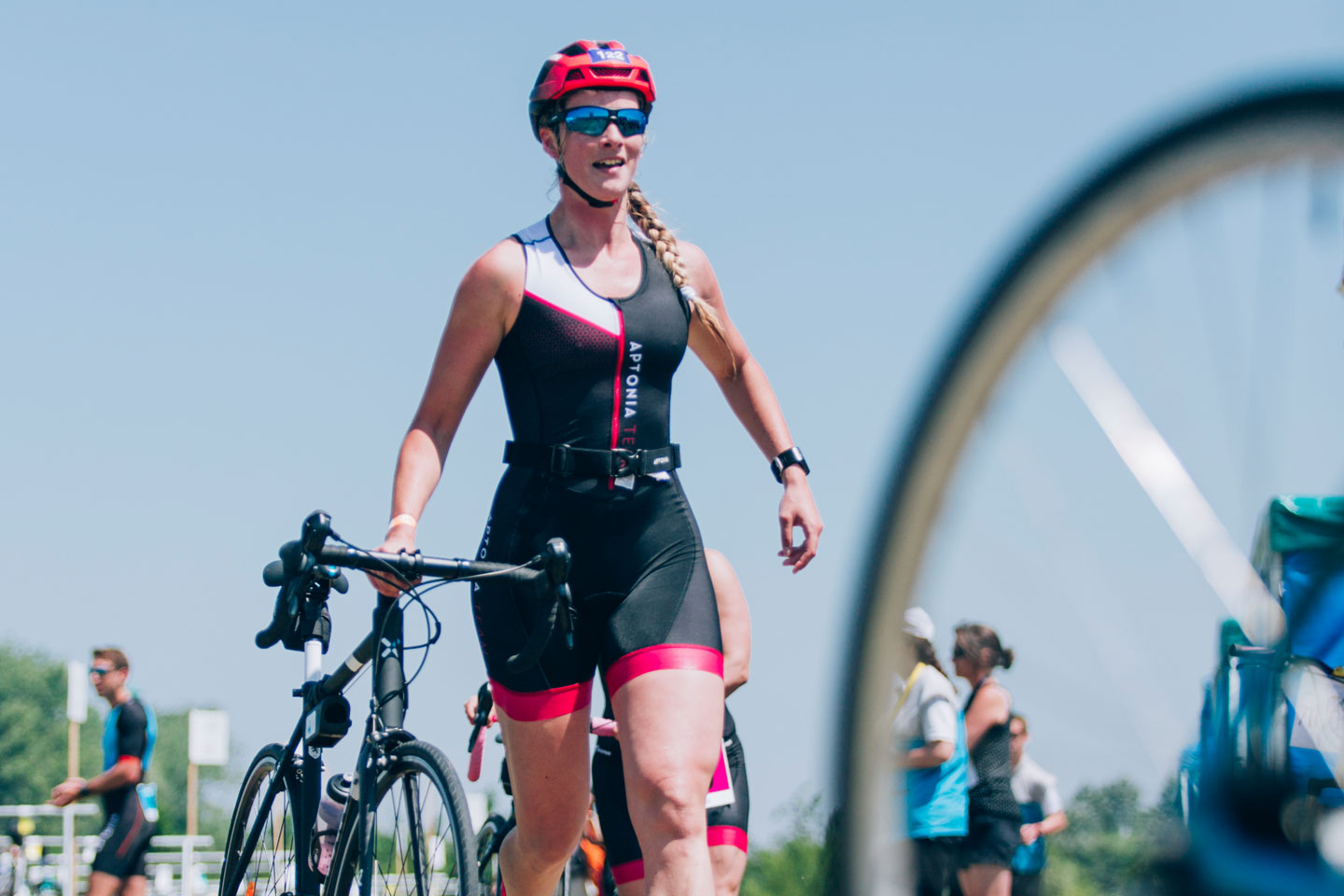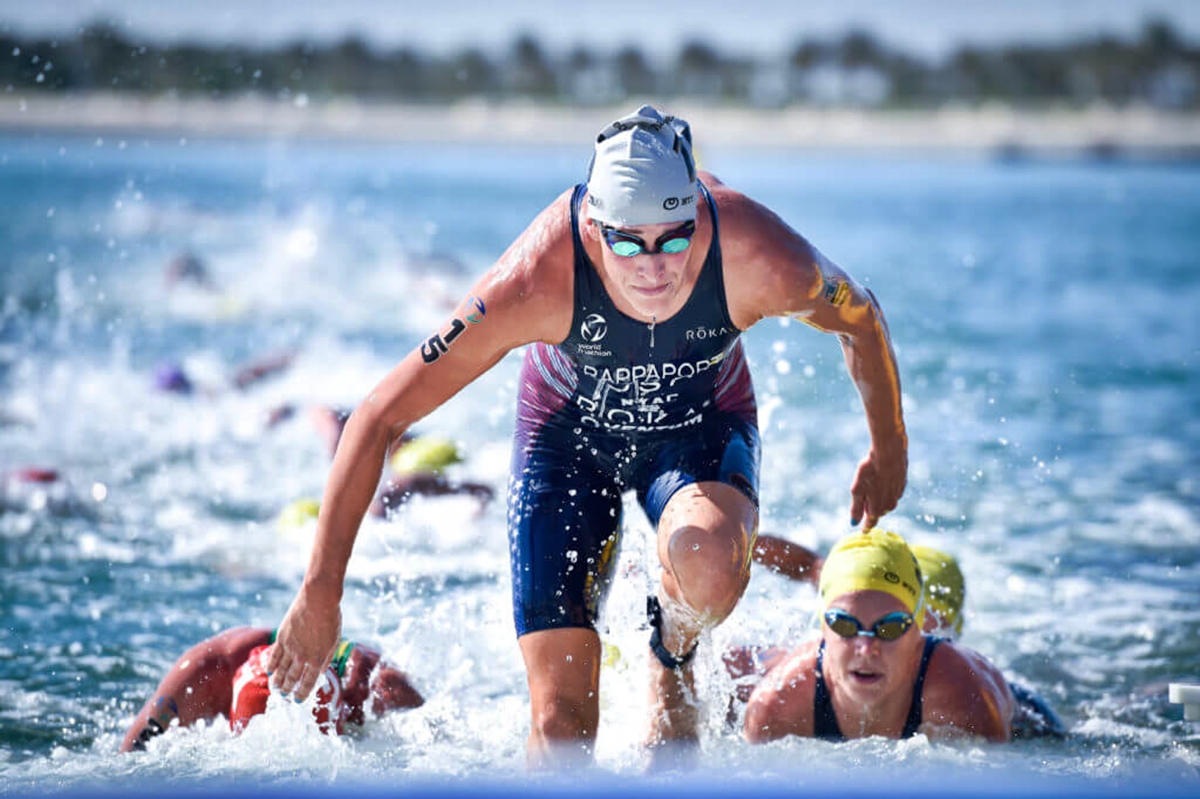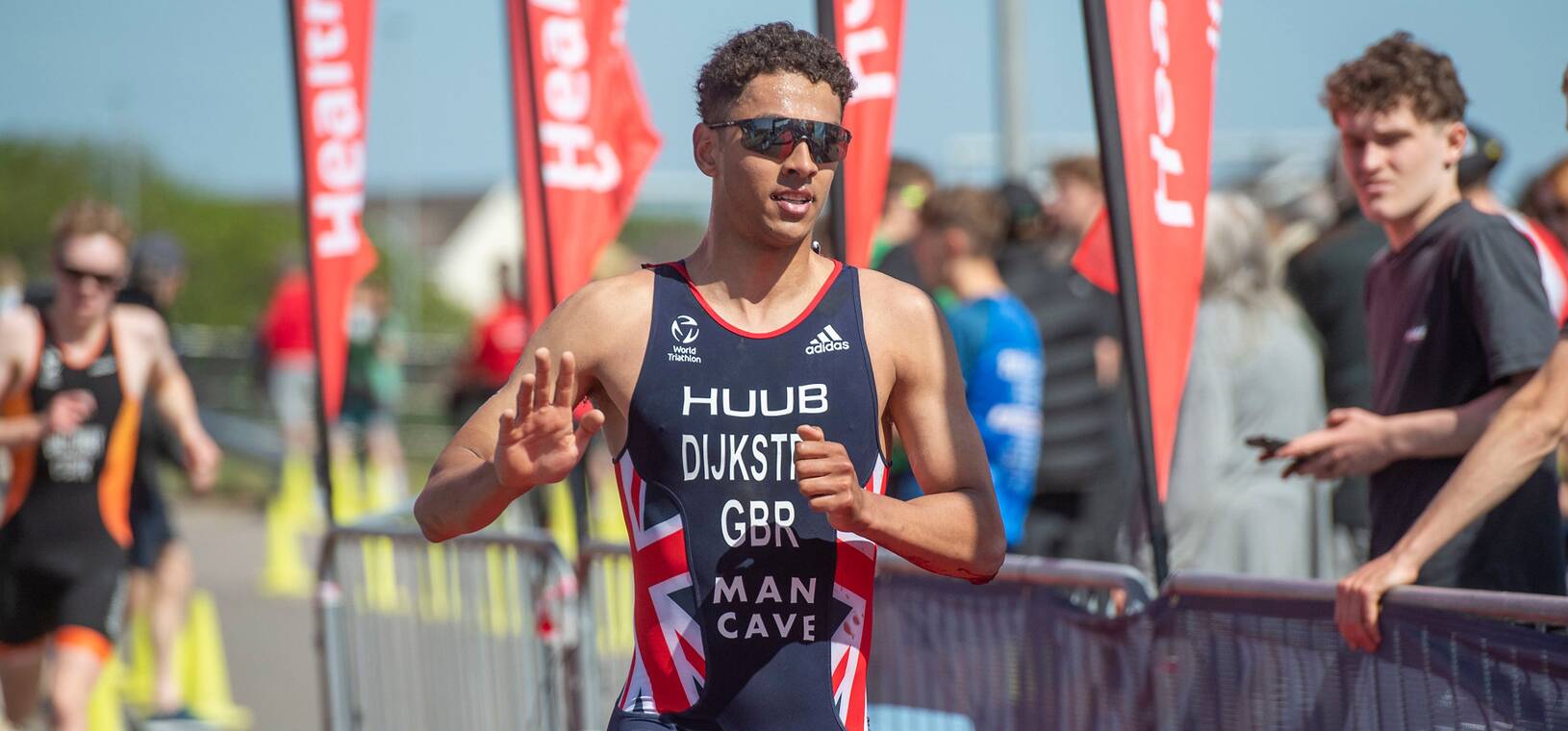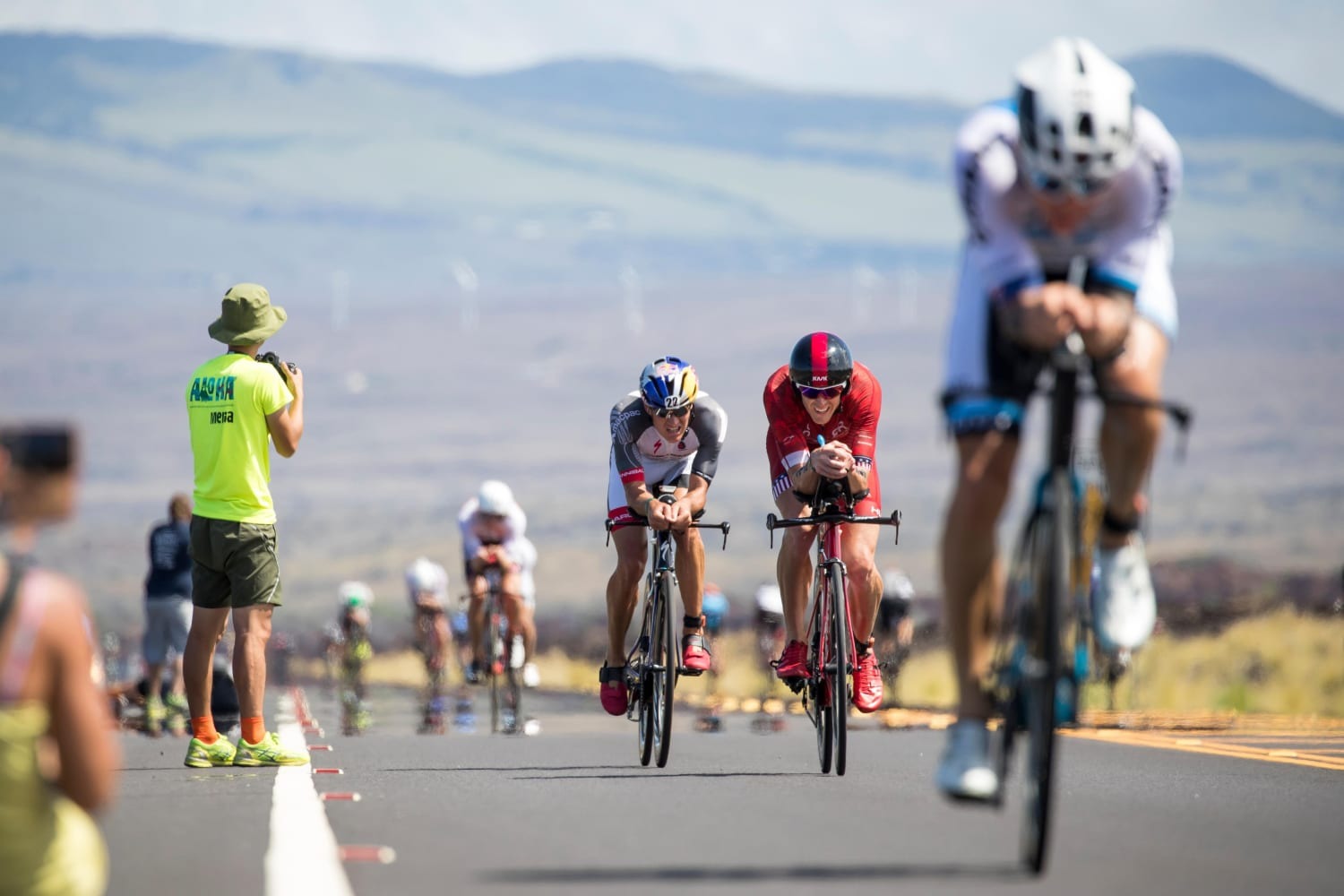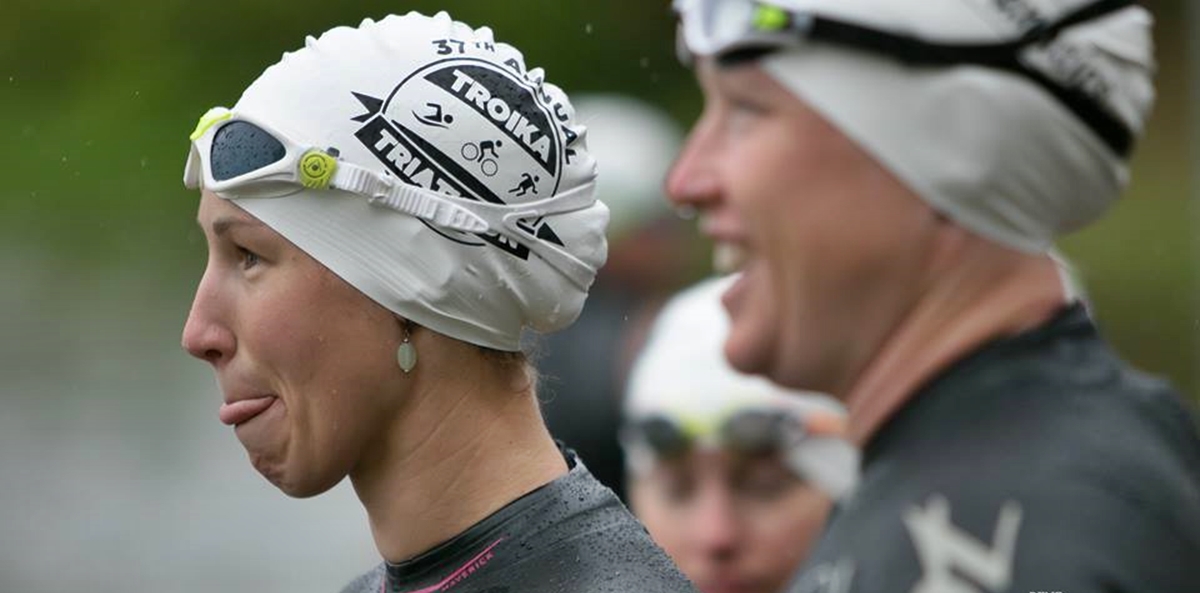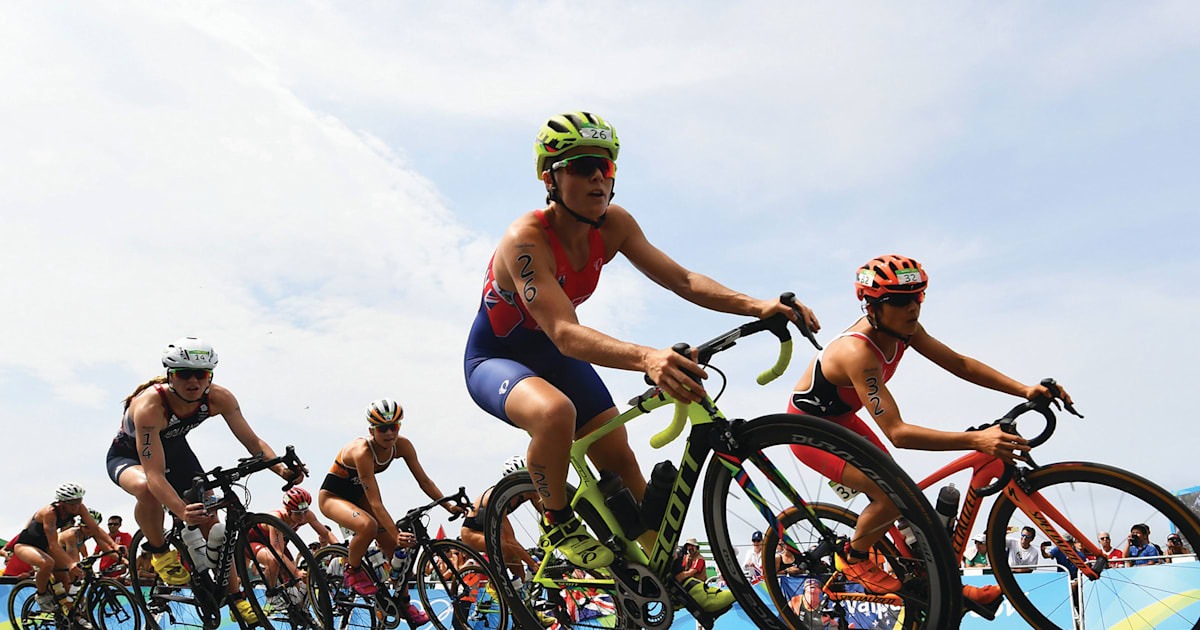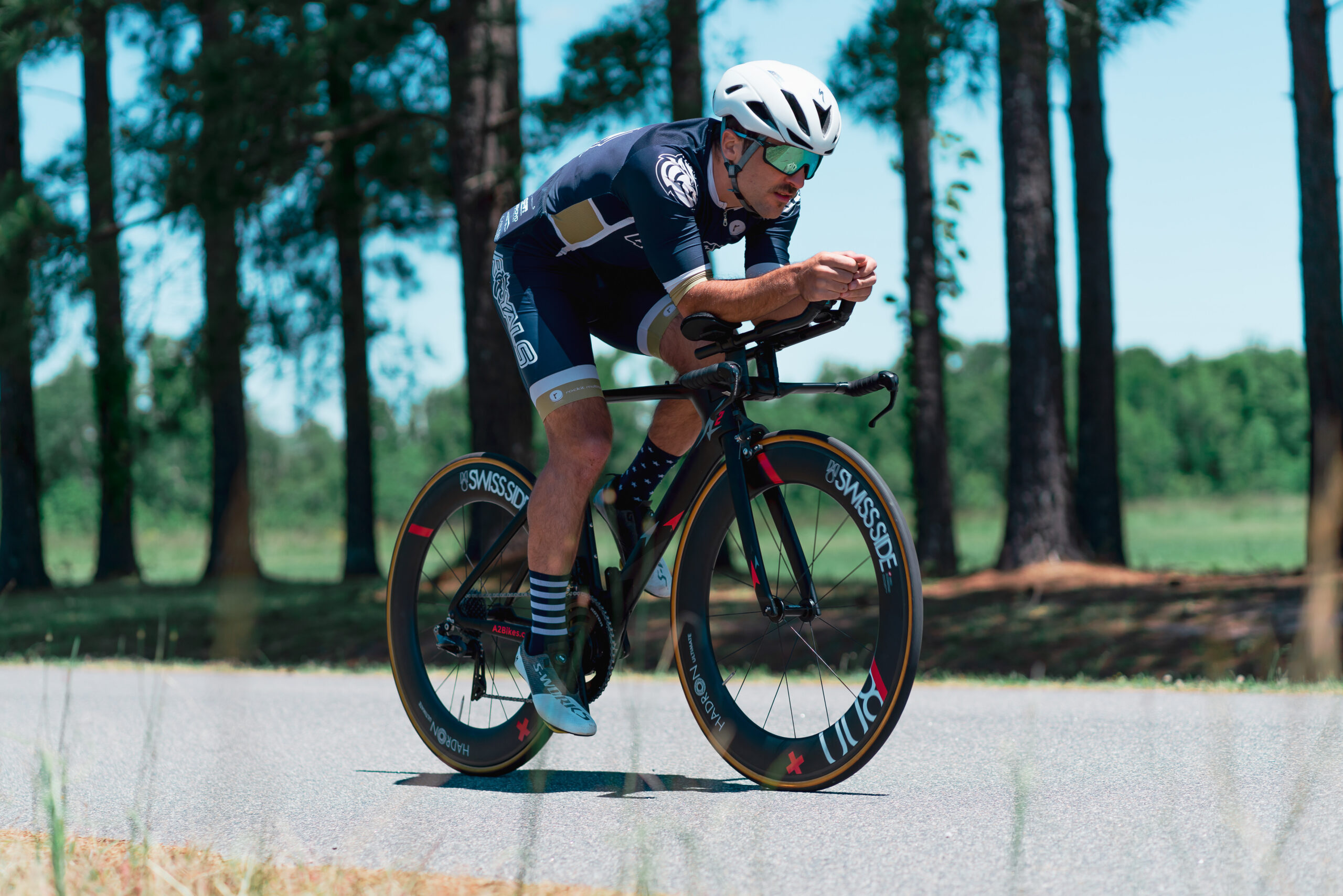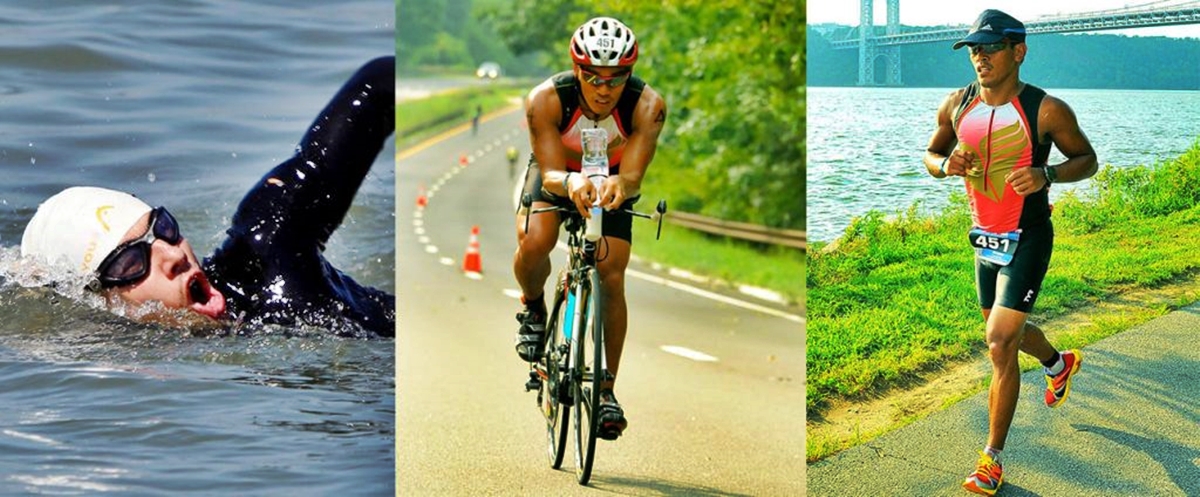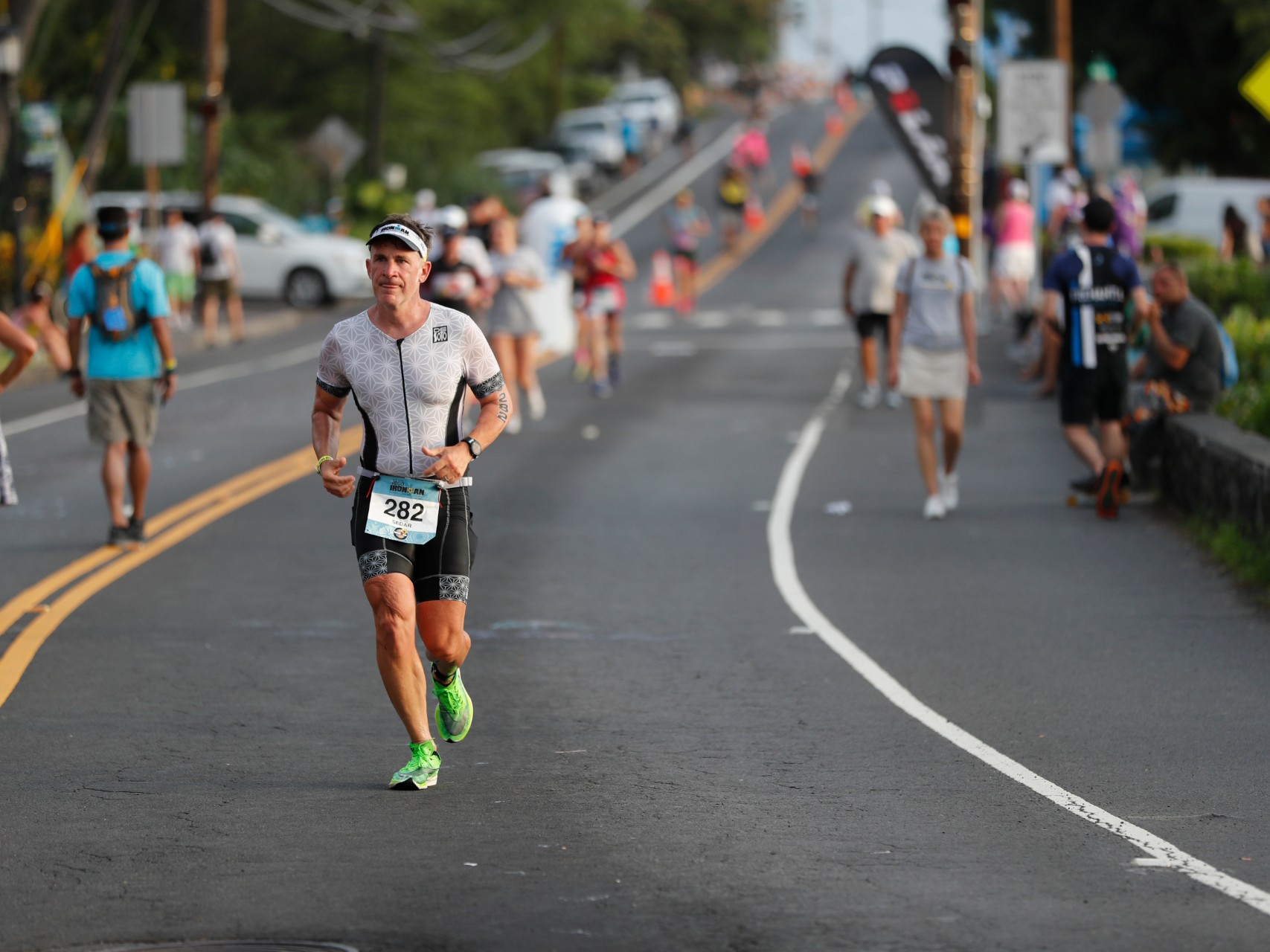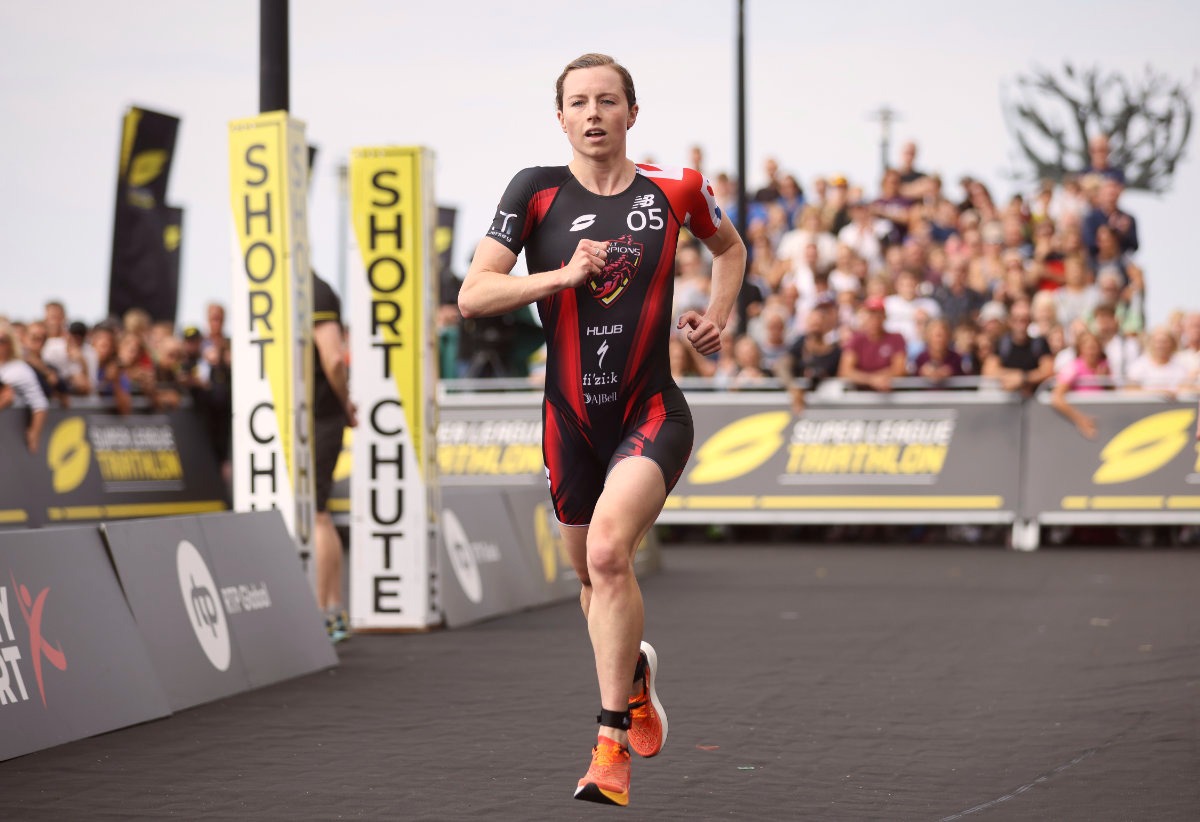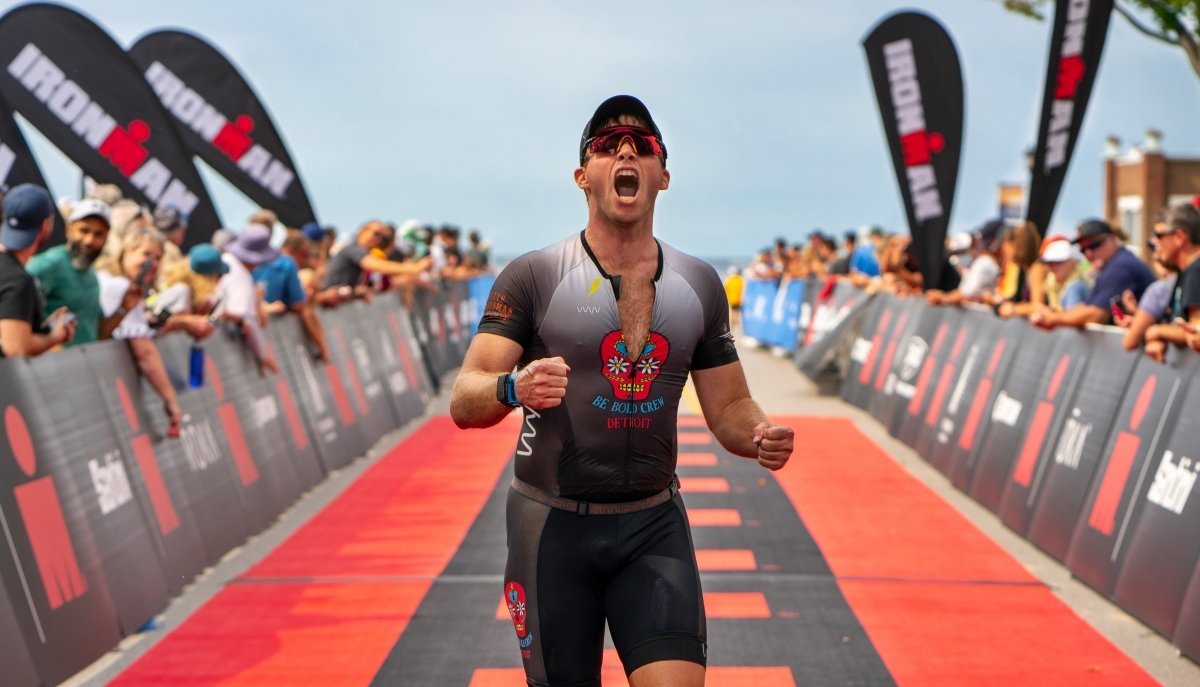

Featured
How To Enter The Ironman Triathlon
Modified: August 21, 2023
Featured: Learn how to enter the Ironman Triathlon and take on the ultimate endurance challenge. Get expert training tips and advice for this iconic event.
Introduction
Welcome to the world of Ironman Triathlon, an endurance event that pushes the limits of human physical and mental capabilities. If you are looking for the ultimate test of strength, determination, and perseverance, then this is the event for you. Completing an Ironman Triathlon is not only a remarkable personal achievement, but it also represents a triumph of the human spirit.
The Ironman Triathlon is a grueling race that consists of a 2.4-mile (3.86 km) swim, followed by a 112-mile (180.25 km) bike ride, and capped off with a 26.2-mile (42.20 km) marathon run. This extraordinary race was first held in 1978 in Hawai’i and has since grown into a global phenomenon, attracting professional athletes and amateur enthusiasts alike.
The allure of the Ironman Triathlon lies in the arduous journey it takes participants on. The physical demands of swimming, cycling, and running for such long distances, coupled with the mental toughness required to keep going when your body cries out for rest, make this race a true test of character.
If you are considering entering the Ironman Triathlon, it is important to set realistic goals. The journey to becoming an Ironman is not one that can be rushed or taken lightly. It requires months, and often years, of dedicated training and preparation.
In this comprehensive guide, we will take you through the various aspects of preparing for and completing an Ironman Triathlon. We will provide you with tips on building endurance, creating a training plan, perfecting swimming techniques, optimizing your cycling performance, developing running strategies, ensuring proper nutrition and hydration, and maintaining mental focus.
Additionally, we will discuss the importance of mental preparation and share some practical advice to help you have a successful race day. By the end of this guide, you will be equipped with the knowledge and tools to embark on your Ironman journey with confidence.
So, whether you are an experienced triathlete looking to tackle the ultimate challenge or a novice seeking to push your limits, let us delve into the world of Ironman Triathlon and discover what it takes to become an Ironman.
What is the Ironman Triathlon?
The Ironman Triathlon is a legendary endurance race that combines three disciplines: swimming, cycling, and running. It is considered one of the most challenging and prestigious events in the world of endurance sports. The race originated in 1978 in Hawai’i, when a group of athletes debated who were the fittest athletes: swimmers, cyclists, or runners. To settle the argument, they combined the three sports into a single race, and thus the Ironman Triathlon was born.
The Ironman Triathlon consists of a 2.4-mile (3.86 km) swim, followed by a 112-mile (180.25 km) bike ride, and culminating with a full marathon-distance run of 26.2 miles (42.20 km). Participants must complete all three disciplines consecutively without a break, making it a true test of physical and mental endurance.
One of the distinguishing features of the Ironman Triathlon is its length. Compared to other triathlon distances, such as the Olympic-distance or the Half Ironman, the full Ironman requires participants to go above and beyond their comfort zones, pushing their bodies to their limits.
The race attracts a diverse range of participants, including professional athletes, dedicated amateurs, and age-group competitors. The Ironman Triathlon offers a level playing field for all participants, as it is a race against the clock rather than direct competition with other athletes.
Ironman races are held globally, with some of the most renowned events taking place in locations like Kona, Hawai’i; Lake Placid, New York; and Cairns, Australia. These events not only showcase the beauty of the natural surroundings but also provide a challenging course with varying terrains and climates.
Finishing an Ironman Triathlon is a significant accomplishment that requires months of focused training, discipline, and mental fortitude. Crossing the finish line represents a personal triumph and a display of sheer determination.
The Ironman Triathlon has grown exponentially in popularity over the years, and it continues to inspire and captivate athletes from all walks of life. It embodies the belief that anything is possible with hard work, dedication, and the willingness to push beyond self-imposed limits.
Whether you aspire to become an Ironman or are simply captivated by the extraordinary efforts put forth by the participants, the Ironman Triathlon is a true testament to the power of the human spirit and the endless pursuit of excellence.
Setting Your Goal
Entering an Ironman Triathlon requires careful consideration and goal setting. It is essential to establish a clear objective that not only motivates you but also aligns with your current fitness level and available training time. Setting the right goal will provide you with a sense of purpose and guide your training journey.
When setting your goal for the Ironman Triathlon, it is crucial to be realistic and honest with yourself. Evaluate your current fitness level, previous athletic experience, and available time for training. Consider your strengths and weaknesses in the three disciplines—swimming, cycling, and running. Assessing your abilities and limitations will help you set a realistic and attainable goal.
Keep in mind that the Ironman Triathlon is a challenging and demanding race. Therefore, setting a goal to simply finish the race is a worthy and commendable objective, especially if you are new to the world of endurance events. Completing an Ironman requires significant dedication, discipline, and mental toughness.
If you are an experienced triathlete looking for a more competitive goal, you may aim to improve your personal best time or qualify for prestigious events, such as the Ironman World Championship in Kona, Hawai’i. These goals may require more focused and intense training regimens.
It is also important to consider the timeline for your goal. Ironman Triathlon training typically spans several months, if not years. Depending on your current fitness level and experience, you may need more or less time to adequately prepare for the race.
Once you have established your primary goal, it can be helpful to break it down into smaller, milestone goals. These smaller goals will allow you to track your progress and provide you with a sense of accomplishment along the way.
Remember, setting goals is not solely about the endpoint; it is also about embracing the journey. The training and preparation for an Ironman Triathlon can be transformational. It is an opportunity to develop discipline, mental resilience, and self-belief.
Lastly, make sure to write down your goal and keep it visible. Place it somewhere you can see it every day to serve as a constant reminder of your commitment and motivation. Sharing your goal with friends, family, or a training partner can also provide the support and accountability you need throughout your Ironman journey.
Setting a clear and realistic goal for the Ironman Triathlon will guide your training, keep you motivated, and provide a sense of purpose. It is the first step in your transformative journey to becoming an Ironman.
Building Endurance
Endurance is a key component of success in the Ironman Triathlon. Building and improving your endurance will allow you to sustain the physical demands of swimming, cycling, and running for extended periods. By gradually increasing the duration and intensity of your workouts, you can enhance your cardiovascular fitness, muscular endurance, and overall stamina.
One of the most effective ways to build endurance is through consistent and progressive training. This involves gradually increasing the distance or duration of your workouts over time. Start with manageable distances and gradually increase the workload as your body adapts and becomes stronger.
Include long-distance training sessions in your weekly routine to simulate the demands of the Ironman Triathlon. These sessions should focus on building your aerobic capacity and training your body to efficiently utilize energy reserves. During these workouts, maintain a steady pace that allows you to cover the desired distance without pushing too hard.
It is also helpful to incorporate interval training into your endurance-building regimen. Interval training involves alternating between high-intensity efforts and periods of recovery. This type of training can help improve your speed, power, and overall fitness level. For example, you can incorporate intervals of faster-paced running or cycling into your training sessions to challenge your cardiovascular system and build endurance.
Another crucial aspect of building endurance is incorporating cross-training into your routine. Cross-training involves engaging in different types of physical activities to work different muscles and prevent overuse injuries. Adding activities such as swimming, yoga, or strength training can complement your endurance training and enhance overall fitness.
Consistency is key when building endurance. Make sure to schedule regular training sessions and commit to following your training plan. Gradual and consistent progress over time will lead to improved endurance and performance.
As you build your endurance, it is essential to listen to your body and prioritize recovery. Give yourself adequate time to rest and recover between workouts to avoid burnout and injury. Include rest days in your training plan and consider incorporating techniques such as foam rolling and stretching to aid in recovery.
Lastly, remember to fuel your body properly during training. Eating a balanced diet that includes a mix of carbohydrates, protein, and healthy fats will provide the necessary energy for your workouts and aid in recovery. Stay hydrated by drinking enough water throughout the day and during training sessions.
Building endurance is a fundamental aspect of preparing for the Ironman Triathlon. By gradually increasing your training load, incorporating interval training, cross-training, and prioritizing recovery, you will develop the physical and mental resilience required to tackle the challenges of the race.
Training Plan
Having a well-structured training plan is crucial for successfully preparing for the Ironman Triathlon. A training plan will help you stay organized, track your progress, and ensure that you are adequately prepared for the physical and mental demands of the race.
- Assess your current fitness level: Before creating a training plan, it is important to assess your current fitness level and determine where you stand in terms of the swimming, cycling, and running disciplines. Consider factors such as your previous experience, strengths, weaknesses, and available training time.
- Set realistic goals: Based on your fitness level and desired race goals, establish realistic and achievable targets for each discipline. Ensure that the goals are specific, measurable, attainable, relevant, and time-bound (SMART goals).
- Consult with a coach: If you are new to the Ironman Triathlon or need guidance in creating an effective training plan, consider consulting with a professional coach. A coach can help tailor a plan to your needs, provide insight into proper technique, and monitor your progress.
- Plan your training schedule: Create a weekly schedule that outlines when and how you will train for each discipline. Allocate specific days for swimming, cycling, running, and rest. Make sure to include time for strength training and cross-training activities.
- Gradually increase training volume: Begin with manageable training volumes and gradually increase the duration and intensity of your workouts over time. This progressive approach helps prevent injury and allows your body to adapt to the demands of the race.
- Include variety in your workouts: Incorporate a mix of different workouts to keep your training engaging and challenging. Include long, endurance-building sessions, interval training sessions, speed workouts, and recovery sessions. This variety will help develop different aspects of your fitness and prevent plateauing.
- Listen to your body: Pay attention to any signs of fatigue or overtraining. It is important to balance pushing your limits with proper recovery. Incorporate rest days into your training plan and adjust the intensity or duration of your workouts as needed.
- Track your progress: Keep a training log or use a fitness app to track your workouts, monitor your progress, and make adjustments to your training plan as necessary. Regularly reassess your goals and make any necessary modifications to ensure you are on track.
- Stay motivated and accountable: Find ways to stay motivated throughout your training journey. This can include training with a partner or joining a triathlon club for support and accountability. Celebrate milestones along the way to keep yourself motivated and committed to your training plan.
A well-designed training plan is essential for reaching your full potential in the Ironman Triathlon. It provides structure, guidance, and a roadmap to success. Remember to be flexible and adaptable as you follow your plan, and always prioritize your health and well-being throughout the training process.
Swimming Techniques
Swimming is the first discipline in the Ironman Triathlon, and having efficient swimming techniques can greatly impact your performance in the race. Whether you are a beginner or an experienced swimmer, focusing on proper form and technique can improve your speed, conserve energy, and enhance overall efficiency in the water.
- Body Position: Maintain a horizontal body position in the water, with your head, hips, and feet aligned. This reduces drag and allows for a smoother and more streamlined swim. Keep your core engaged, and avoid excessive dipping or lifting of the hips.
- Breathing: Practice rhythmic breathing by inhaling and exhaling while turning your head to the side. Exhale steadily underwater to avoid holding your breath. Incorporate bilateral breathing (breathing to both sides) to balance out your stroke and improve overall symmetry.
- Arm Technique: Reach forward with your arm, extending it fully before initiating the pull phase. Use a high elbow position during the pull, pushing the water back past your hip. Maintain a relaxed recovery phase, keeping your arm close to the water’s surface.
- Kick Technique: Use a steady and consistent kick to provide propulsion and stabilization in the water. Avoid excessive kicking that may waste energy. The kick should originate from the hips and flow down to the feet, with a slight bend in the knees.
- Head Position: Keep your head in a neutral position, facing downward with your eyes looking forward. Avoid lifting your head too high as it can disrupt your body alignment and increase drag. Find a comfortable head position that allows for efficient breathing and forward vision.
- Turns and Transitions: Practice efficient turns at the end of each lap during training to minimize time and effort. Work on smooth transitions from swimming to cycling and running, focusing on quickly removing your wetsuit (if applicable) and getting in and out of the water smoothly.
- Technique Drills: Incorporate technique drills into your swim workouts to reinforce proper form and improve specific aspects of your stroke. These drills can include sculling, catch-up drill, fingertip drag, and kicking on your side.
- Open Water Practice: If possible, train in open water conditions to simulate race scenarios. Practice sighting techniques to navigate and maintain a straight course. Acclimatize to swimming in open water and develop strategies for dealing with waves, currents, and other competitors.
- Get Professional Guidance: Consider seeking guidance from a swim coach or joining a swimming program to improve your technique. A coach can provide personalized feedback and help you refine your strokes for maximum efficiency.
Consistent practice and focus on swimming technique will help you become a more efficient and confident swimmer in the Ironman Triathlon. Incorporate drills, seek professional guidance, and practice open water skills to enhance your overall swimming performance and set the stage for a successful race.
Cycling Tips
Cycling is a significant portion of the Ironman Triathlon, and mastering cycling techniques can make a substantial difference in your overall performance. Whether you are a beginner cyclist or an experienced rider, focusing on key cycling tips can improve your speed, endurance, and efficiency on the bike.
- Bike Fit: Ensure that your bike fits correctly to maximize comfort and power output. Have a professional bike fit or work with a knowledgeable person to adjust your saddle height, handlebar position, and cleat alignment.
- Proper Cadence: Aim for a cadence (pedal revolutions per minute) between 80 and 90. Spinning at a higher cadence with lower resistance can help conserve energy and reduce muscle fatigue.
- Efficient Pedaling Technique: Focus on smooth and circular pedaling motion by engaging the hip flexors, quadriceps, and glutes. Pull up and push down on the pedals throughout the entire pedal stroke to achieve a more efficient power transfer.
- Braking Technique: Use your brakes wisely and avoid excessive braking. Feather the brakes gently rather than gripping them tightly to maintain control and conserve momentum, especially during descents.
- Cornering Skills: Practice proper cornering technique by leaning into turns and keeping your weight balanced. Gradually brake before entering the turn, let off the brakes when cornering, and accelerate out of the turn smoothly.
- Group Riding Etiquette: If you train or compete in group rides, familiarize yourself with group riding etiquette and safety. Maintain a safe distance from other riders, communicate your intentions, and follow the rules of the road.
- Nutrition and Hydration: Develop a plan for fueling and hydrating during long rides. Consume carbohydrate-rich snacks, energy gels, and electrolyte-rich fluids to maintain energy levels and prevent dehydration.
- Tire Pressure: Regularly check and maintain the appropriate tire pressure for optimal performance and comfort. Balancing tire pressure based on road conditions and personal preferences can improve traction and reduce rolling resistance.
- Training on Various Terrains: Vary your training routes to include flat roads, hills, and varying surface conditions. This will not only enhance your physical capabilities but also improve your bike handling skills and adaptability.
- Condition-Specific Workouts: Incorporate specific workouts into your training plan to simulate race conditions. Include hill repeats, tempo rides, and intervals to build strength, endurance, and speed.
Consistent practice, attention to technique, and a well-thought-out training plan will help you become a more skilled and efficient cyclist in the Ironman Triathlon. Focus on proper bike fit, pedaling technique, and cornering skills, while also paying attention to nutrition, hydration, and tire maintenance. With dedication and training, you will be well-prepared to conquer the cycling leg of the race.
Running Strategies
The running leg of the Ironman Triathlon can be physically and mentally challenging, but with proper running strategies, you can optimize your performance and maintain a strong pace throughout the marathon distance. Whether you are a seasoned runner or new to the sport, focusing on key strategies will help you tackle the run portion of the race with confidence.
- Pace Yourself: Start the run portion at a controlled pace to avoid burning out early on. Aim to maintain a steady and sustainable pace throughout the marathon distance.
- Practice Negative Splits: Negative splits involve running the second half of the race faster than the first. Begin conservatively and gradually increase your pace as you progress, allowing you to finish strong.
- Efficient Running Form: Focus on running with good form, which includes an upright posture, relaxed shoulders, and a slight forward lean. Maintain a mid-foot strike to minimize impact and maximize efficiency.
- Interval Training: Incorporate interval training into your running workouts to improve speed and endurance. Include tempo runs, fartleks, and track workouts to challenge your body and simulate race pace.
- Hill Training: Incorporate hill repeats into your training regimen to build strength and improve running technique. Practice proper form when running uphill and use the downhills for recovery.
- Mental Strategies: Develop mental strategies to stay focused and motivated during the run. Break the race down into smaller, manageable segments, set mini-goals, and use positive self-talk to stay mentally strong.
- Nutrition and Hydration: Fuel your body with a combination of carbohydrates and electrolytes during the run. Use energy gels, sports drinks, and water to maintain energy levels and prevent dehydration.
- Practice Transition Runs: Mimic race conditions by incorporating transition runs into your training. This involves running immediately after a cycling session to prepare your body for the unique feeling of transitioning from the bike to the run.
- Recovery and Rest: Allow yourself adequate recovery time between runs to prevent overuse injuries. Include rest days in your training plan and prioritize post-run recovery activities such as stretching and foam rolling.
- Visualization: Visualize success during your training runs and as you approach the race. Imagine yourself running strong, crossing the finish line, and achieving your goal. Visualization can help boost confidence and mental resilience.
By incorporating these running strategies into your training plan and race day approach, you will be equipped to navigate the marathon distance of the Ironman Triathlon with confidence. Remember to pace yourself, focus on efficient running form, and maintain a positive mindset throughout the run. With determination and proper strategies, you can conquer the final leg of the race and cross the finish line strong.
Nutrition and Hydration
Nutrition and hydration are key elements to consider during the Ironman Triathlon. Proper fueling and hydration strategies will help maintain energy levels, optimize performance, and prevent dehydration and fatigue. Here are some important considerations for nutrition and hydration during your training and on race day.
- Pre-Race Nutrition: Prior to the race, focus on consuming a balanced meal that includes carbohydrates for energy, protein for muscle repair, and healthy fats for sustained fuel. Avoid trying new or unfamiliar foods on race day to prevent stomach discomfort.
- During Training: Practice your nutrition and hydration strategy during your long training sessions. Experiment with different types of sports drinks, energy gels, bars, and whole foods to find what works best for you. Aim to consume 30-60 grams of carbohydrates per hour of training.
- During the Race: Have a well-thought-out nutrition and hydration plan for the race. Break your fueling into smaller, frequent intervals to avoid stomach discomfort. Consume carbohydrates, electrolytes, and fluids regularly to maintain energy and fluid balance.
- Sports Drinks and Electrolytes: Use sports drinks or electrolyte-enhanced fluids to replenish the electrolytes lost through sweat. These beverages help maintain fluid balance and prevent muscle cramps.
- Energy Gels and Bars: Energy gels and bars provide a concentrated source of carbohydrates for quick and easily digestible fuel. Experiment with different flavors and brands during training to find what works best for you.
- Whole Foods: Incorporate whole food options such as bananas, dates, nuts, or sandwiches into your nutrition plan. These can provide additional nutrients and a break from processed sports nutrition products.
- Hydration: Consume fluids consistently throughout the race to prevent dehydration. Aim for approximately 20-30 ounces (590-890 ml) of fluid per hour, but adjust based on your sweat rate and environmental conditions.
- Recovery Nutrition: After the race, prioritize recovery nutrition to replenish glycogen stores and aid in muscle repair. Consume a mix of carbohydrates and protein within the recommended recovery window of 30-60 minutes post-exercise.
- Listen to Your Body: Pay attention to your body’s cues during training and the race. Each individual’s nutrition and hydration needs may vary, so adjust your strategy based on how you feel and perform.
- Practice: Use your long training sessions to practice your nutrition and hydration plan as closely as possible to race day conditions. This will allow you to fine-tune your strategy and address any issues that may arise.
Remember that nutrition and hydration are essential components of your overall training and race day strategy. Develop a plan based on your individual needs, practice it during training, and make any necessary adjustments. By fueling and hydrating properly, you will optimize your performance and increase your chances of crossing the Ironman Triathlon finish line with strength and energy.
Mental Preparation
Mental preparation is a vital aspect of successfully completing the Ironman Triathlon. Developing mental strength and resilience will help you overcome challenges, stay focused, and maintain a positive mindset throughout the race. Here are some strategies to help you prepare mentally for the demands of the Ironman Triathlon.
- Visualize Success: Visualize yourself crossing the finish line, feeling strong and accomplished. Use imagery to create positive mental images of yourself performing well during training and on race day.
- Goal Setting: Set realistic and achievable goals for different stages of the race. Break the race down into smaller milestones to keep you motivated and focused during the journey.
- Positive Self-Talk: Replace negative thoughts with positive and supportive self-talk. Encourage yourself with affirmations and remind yourself of your strengths and abilities.
- Mindfulness and Meditation: Practice mindfulness and meditation techniques to stay present and calm, especially during challenging moments. Develop the ability to acknowledge and accept discomfort without letting it negatively impact your performance.
- Reframe Challenges as Opportunities: Instead of viewing challenges as obstacles, reframe them as opportunities for growth and learning. Embrace the difficulties and use them as fuel to push through and become stronger.
- Create a Mantra: Develop a personal mantra or phrase that you can repeat to yourself during tough moments. It can be something that resonates with you and provides a mental boost when you need it the most.
- Break the Race into Segments: Mentally divide the race into smaller segments, focusing on one stage at a time. This approach helps make the race feel more manageable and prevents you from becoming overwhelmed.
- Practice Mental Toughness: Push yourself outside your comfort zone during training to develop mental resilience. Embrace challenging workouts and push through fatigue to build mental strength.
- Surround Yourself with Support: Seek the support and encouragement of friends, family, or fellow triathletes during the race. Their presence and cheering can uplift your spirits and provide an extra motivational boost.
- Reflect on Your Training: Remind yourself of the countless hours of training and preparation you have put into this race. Reflect on the progress you have made and the hard work that has gone into preparing for the Ironman Triathlon.
Remember that mental preparation is just as important as physical preparation in the Ironman Triathlon. By developing mental strength, embracing challenges, staying positive, and visualizing success, you will be better equipped to handle the highs and lows of the race. Cultivate a resilient mindset, and you will have a strong foundation to achieve your goals in the Ironman Triathlon.
Preparing for Race Day
As race day approaches, it is important to ensure that you are fully prepared physically, mentally, and logistically for the Ironman Triathlon. A well-planned race day strategy will help you navigate the event smoothly and maximize your performance. Here are some key tips to help you prepare for race day:
- Tapering: Prioritize rest and recovery during the last week leading up to the race. Reduce training volume and intensity to allow your body to fully recover and be fresh on race day.
- Pre-Race Nutrition: Follow a nutrition plan in the days leading up to the race. Focus on consuming easily digestible carbohydrates to top off glycogen stores and ensure optimum fuel reserves.
- Visualize the Race: Spend time visualizing the different stages of the race, from the swim start to the run finish. Prepare mentally for potential challenges and mentally rehearse your strategies for overcoming them.
- Equipment Check: Double-check your gear and equipment to ensure everything is in working order. This includes your bike, helmet, running shoes, wetsuit (if applicable), and any other accessories you will need on race day.
- Transition Setup: Familiarize yourself with the transition area layout and plan your setup accordingly. Place your gear in a strategic and organized manner to make transitions smooth and efficient.
- Review the Course: Study the race course beforehand to familiarize yourself with any challenging sections, elevation changes, or specific landmarks. This will help you plan your pacing and strategy for each leg of the race.
- Hydration Plan: Develop a hydration plan for race day and practice it during your long training sessions. Determine how much fluid to consume at each aid station and establish a routine to ensure adequate hydration throughout the race.
- Nutrition Plan: Have a detailed nutrition plan for race day. Determine when and how often to consume energy gels, bars, or other food sources during the race. Stick to foods and beverages that you have successfully used during training.
- Arrive Early: Plan to arrive at the race site early to allow ample time for parking, registration, and setting up. This will help reduce pre-race stress and ensure you have enough time to go through your pre-race routine.
- Warm-Up: Perform a proper warm-up routine that includes dynamic stretching, light jogging, and activation exercises for all three disciplines. This will prepare your body for the physical demands of the race.
- Race Day Nutrition: Have a light and easily digestible breakfast on race day, focusing on carbohydrates and a small amount of protein. Avoid trying new foods that you have not tested during training.
- Stay Calm and Focused: As the race approaches, stay calm, composed, and focused on the task ahead. Trust in your training and the preparation you have put into the race. Use positive self-talk and deep breathing techniques to manage any pre-race jitters.
By following these race day preparation tips, you will set yourself up for a smooth and successful Ironman Triathlon experience. Prepare both physically and mentally, review the race logistics, ensure your equipment is in order, and have a solid nutrition and hydration plan. With careful preparation, you will be ready to embrace the challenges and achieve your goals on race day.
Conclusion
Preparing for and participating in the Ironman Triathlon is a remarkable journey that requires dedication, discipline, and a strong commitment to pushing your limits. By focusing on key aspects such as setting realistic goals, building endurance, fine-tuning swimming, cycling, and running techniques, as well as honing your mental strength, nutrition, and hydration strategies, you can optimize your performance and conquer this incredible endurance event.
Throughout this comprehensive guide, we have explored the various elements that contribute to success in the Ironman Triathlon. From understanding the nature of the race and setting appropriate goals to training effectively, developing efficient techniques, and preparing mentally and logistically for race day, each step is crucial in your journey to becoming an Ironman.
Remember to listen to your body, adapt your training when necessary, and seek guidance from professionals or experienced athletes. Consistency, perseverance, and patience are key as you progress through the training and overcome the challenges along the way.
Ultimately, completing an Ironman Triathlon is not solely about crossing the finish line but also about the personal growth and transformation that occur in the process. It is about pushing beyond your perceived limits, discovering your inner strength, and celebrating the resilience of the human spirit.
So, embrace the journey, commit to your training, and believe in yourself. The path to becoming an Ironman is an arduous but immensely gratifying one. With the knowledge, skills, and determination you have gained from this guide, you are well-equipped to embark on your Ironman journey and achieve a truly extraordinary feat.
